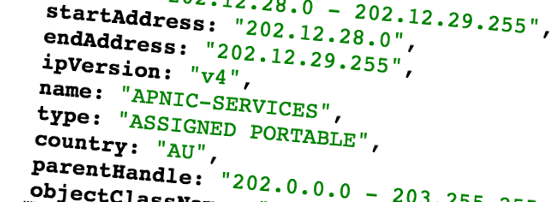
The Registration Data Access Protocol service at APNIC is now out of pilot stage and fully up to date with the specifications. This means anyone writing software to query for WHOIS records now has a superior alternative to fetch and consume registration data, in a way which is consistent not only across all five number registries, but also across compliant domain name services.
RDAP was developed to solve a number of limitations in the current WHOIS protocol. It standardizes the query format, so clients only need to learn one way to ask a registry about its data. It standardizes the response format, so clients only need to learn how to parse a response once. It uses common technologies to deliver service, so tool developers can leverage existing libraries and frameworks. It supports redirection, so querying APNIC for an ARIN address will redirect to ARIN’s service, and vice-versa. And it supports internationalization, so data is no longer presented in a random character set, but instead always in UTF-8.
Queries are issued as HTTP(S) requests, asking for details of an autonomous system number, an IP (v4 or v6) range, an entity (person, role, mnt-irt), or a domain (reverse zone). The response is in the JavaScript Object Notation (JSON), which means clients can be written as web widgets, embedded in web pages. The following brief JavaScript snippet loads an RDAP record for APNIC’s primary AS number, AS4608:
$.ajax("https://rdap.apnic.net/autnum/4608").done(function(data) {
console.log("APNIC's AS name is " + data.name);
});
Queries are simpler to issue, and responses are easier to interpret.
Internet end users can take advantage of ARIN’s open source NicInfo tool, and benefit from redirects and a common response format.
The views expressed by the authors of this blog are their own and do not necessarily reflect the views of APNIC. Please note a Code of Conduct applies to this blog.
